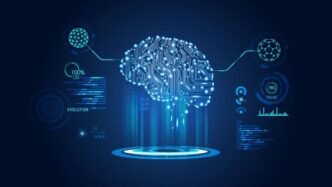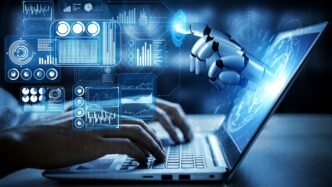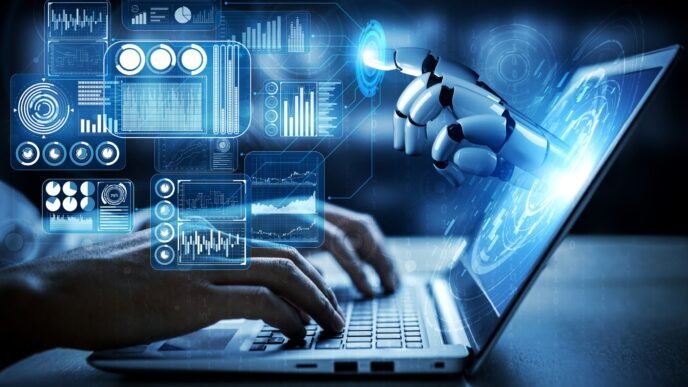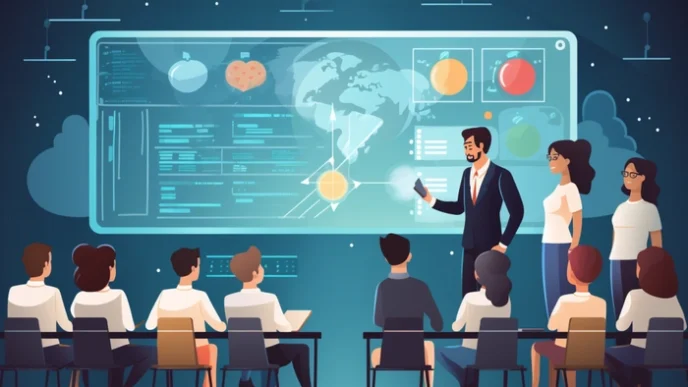How Artificial Intelligence is Transforming Learning and Benefiting Low-Income Students
The advent of Artificial Intelligence (AI) in education is heralding a new era of personalized learning, transforming traditional classrooms into dynamic, adaptive environments. Recent research highlights the profound impact of AI tutors and assistants on education, revealing both exciting opportunities and critical considerations. This article delves into the latest findings, exploring how AI is reshaping education and offering significant benefits, particularly for low-income students.
Table of Contents
1. Introduction to AI in Education
2. The Rise of AI Tutors and Assistants
3. Benefits of AI in Education
• Personalized Learning Experiences
• Enhanced Data Analysis and Decision-Making
• Support for Teachers and Students
4. Drawbacks and Risks of AI Integration
• Ethical and Privacy Concerns
5. Suggestions for Responsible AI Adoption
6. Impact on Low-Income Students
7. Conclusion
Introduction to AI in Education
Artificial Intelligence is no longer a futuristic concept confined to science fiction; it is a tangible reality influencing various sectors, including education. AI technologies such as simulation programs, evaluation-testing support systems, virtual reality (VR) classrooms, assistant robots, and personalized learning systems are becoming increasingly prevalent.
According to a study by Chang & Lu (2019), AI provides strong technical support for personalized learning, moving away from the traditional one-size-fits-all approach. This shift is pivotal in fulfilling the requirements of optimum learning, assisting both teachers and students in achieving educational goals.
The Rise of AI Tutors and Assistants
AI tutors and assistants represent a significant advancement in educational technology. They are designed to:
• Adapt to Individual Learning Styles: AI systems can adjust content delivery based on each student’s pace and understanding.
• Provide Immediate Feedback: Students receive real-time responses, helping them grasp concepts more quickly.
• Support Teachers: By handling administrative tasks and offering additional resources, AI assistants allow educators to focus more on teaching.
Goksel and Bozkurt analyzed numerous studies and found that concepts like adaptive learning, personalization, and learning styles are central to AI in education. This indicates a strong trend towards tailoring educational experiences to individual needs.
Benefits of AI in Education
Personalized Learning Experiences
• Customized Curriculum: AI enables the creation of flexible and editable curriculums that cater to individual student needs.
• Mastery Learning: Students can learn at their own pace, revisiting lessons as needed until they achieve mastery.
• Learning Analytics: The collection and analysis of data about learners help in understanding and improving learning environments (Long & Siemens, 2011).
Enhanced Data Analysis and Decision-Making
• Predictive Analytics: AI can forecast student performance and identify areas needing improvement.
• Resource Optimization: Schools can allocate resources more effectively based on data-driven insights.
• Policy Development: Governments can use AI to predict population movements and invest in relevant educational areas.
Support for Teachers and Students
• Reduced Administrative Burden: AI handles routine tasks, allowing teachers to focus on instruction and mentorship.
• Accessible Education: AI-powered tools can provide quality education resources to remote or underprivileged areas.
• Enhanced Engagement: Interactive AI systems make learning more engaging and enjoyable for students.
Drawbacks and Risks of AI Integration
Over-Reliance on Technology
• Mechanical Learning: Excessive use of AI may lead to a focus on information processing over critical thinking and creativity.
• Reduced Human Interaction: Overdependence on AI tools might diminish valuable social interactions between teachers and students.
Ethical and Privacy Concerns
• Data Security: Collecting and analyzing student data raises concerns about privacy and data protection.
• Bias and Fairness: AI systems may inadvertently perpetuate biases present in their programming or data sets.
Potential Job Displacement
• Teacher Roles: There’s a fear that AI could replace educators, especially in administrative or instructional roles.
• Economic Impact: Job displacement could particularly affect white-collar professions, including teaching, law, and medicine (Picciano, 2019).
Suggestions for Responsible AI Adoption
• Legal and Ethical Frameworks: Establish laws and guidelines specific to AI use in education to address responsibility, property rights, and privacy issues.
• Human Oversight: Ensure that AI systems are supervised by educators and professionals to maintain quality and ethical standards.
• Balanced Integration: Use AI as a tool to enhance, not replace, human teaching and interaction.
• Professional Development: Train teachers to work alongside AI, focusing on mentorship, life skills, and problem-solving.
Impact on Low-Income Students
AI tutors and assistants hold immense potential for benefiting low-income students:
• Accessible Quality Education: AI can deliver high-quality educational content to students who may lack access to experienced teachers or resources.
• Cost-Effective Learning: Digital platforms reduce the need for physical materials, lowering the cost of education.
• Personalized Support: AI systems can identify and address individual learning gaps, providing targeted assistance where it’s needed most.
• Bridging Educational Gaps: By offering consistent and scalable learning opportunities, AI helps level the playing field for students from diverse socioeconomic backgrounds.
Conclusion
The integration of AI tutors and assistants in education is ushering in transformative changes. While there are legitimate concerns regarding ethical implications and potential drawbacks, the benefits—especially for low-income students—are substantial. By adopting responsible practices and legal frameworks, educators and policymakers can harness AI’s potential to create a more equitable and effective educational landscape.
Key Takeaways
• AI Personalization: Tailors learning experiences to individual student needs, enhancing engagement and understanding.
• Support for Low-Income Students: Provides access to quality education and resources, helping to bridge socioeconomic disparities.
• Responsible Integration: Necessitates legal guidelines and ethical considerations to mitigate risks and maximize benefits.
• Teacher Collaboration: AI should complement, not replace, educators, allowing them to focus on mentorship and life skills education.
References:
• Chang, M., & Lu, S. (2019). Artificial intelligence in education.
• Goksel, N., & Bozkurt, A. (2019). Analysis of papers on education and AI studies.
• Long, P., & Siemens, G. (2011). Learning analytics.
• Picciano, A. G. (2019). The role of AI in education.
By embracing AI tutors and assistants thoughtfully, we can unlock new opportunities for all students, fostering an inclusive environment where every learner has the chance to succeed. The future of education lies in the harmonious blend of technology and human touch, ensuring that progress benefits society as a whole.













